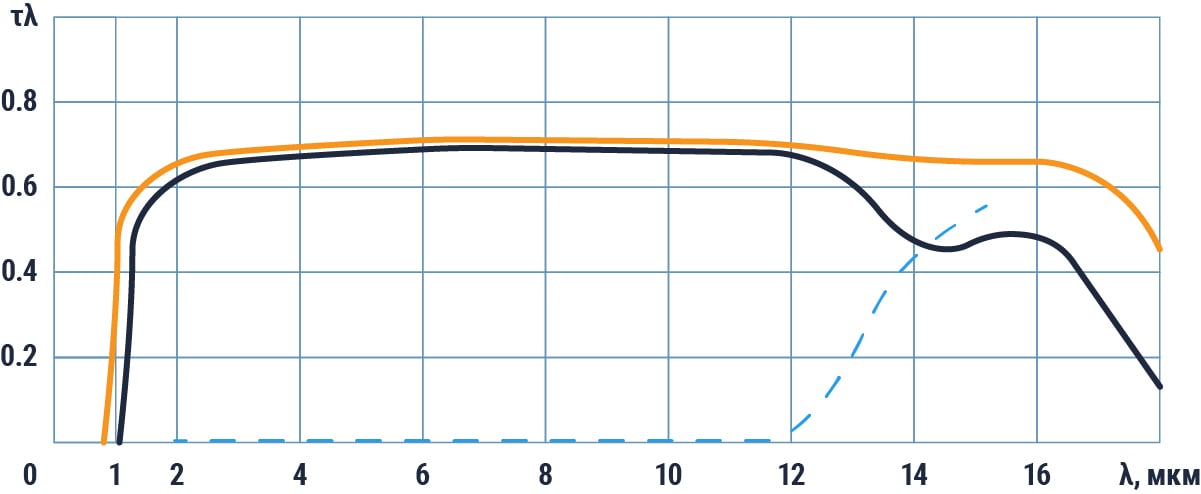Description
Oxygen-free infrared optical glasses are intended for the manufacture of parts for devices operating in the wavelength range of 0.7–17 µm.
The shift of the edge of the fundamental absorption bands to the infrared spectral range is due to the replacement of oxygen in the glass composition by its analogs (sulfur, selenium, tellurium).
Oxygen-free infrared optical glass code IKS25

Application area
Oxygen-free infrared optical glass intended for the manufacture of optical elements (windows, prisms, lenses, filters) of optical infrared devices, thermal imagers for medical and technical purposes, biological and environmental monitoring systems operating in the wavelength range of 1.5 ÷ 17 microns.

Spectral characteristics
| Wavelength, micrometers | Transmission, % (at samples thickness of 10 mm) | Attenuation rate, cm-1 |
|---|---|---|
| 2,0 | 0,56 | 0,05 |
| 3,0 | 0,60 | 0,02 |
| 4,0–12,0 | 0,61 | 0,02 |
| 14,0 | 0,43 | 0,16 |
| 16,0 | 0,43 | — |
Characteristics
| Characteristic | Value |
|---|---|
| Transparency range | 1.5÷17 μm |
| Refractive index for the wavelength of 2 μm | 131 |
| Refractive index for the wavelength of 10 μm | 152 |
| Density | 4.72 g/cm3 |
| Elastic modulus | 19 GPa |
| Glass transition temperature, Tg | 150 oC |
| Softening point | 190 oC |
| Coefficient of linear thermal expansion ᾳ × 107 from -60 to +20 °C | 197 |
| Coefficient of linear thermal expansionᾳ × 107from +20 °C to Tg | 220 |
| Maximum operating temperature | 100 оС |
| Blank size | 25–300 mm a |
a — the ratio of the diameter or diagonal of the glass blank to its thickness from 3: 1 to 10: 1 providing that the thickness is of at least 5 mm
- « Back to All Sections
-
Glass Products
- Optical colored glasses
- Quartz glass production
- Special optical colored glasses
- Oxygen-free optical glasses
- Glass processing
- Стеклокерамика (ситаллы)
- Насыщающийся поглотитель на основе ситаллов с нанокристаллами шпинели, активированными ионами Co2+, для лазера с эрбийсодержащими активными элементами
- Ситалл СО 33М с близким к нулю коэффициентом термического расширения
- Нанокристаллический композиционный материал с высоким диффузным отражением в ультрафиолетовой, видимой и ближней ИК областях марок СООИ8 и СООУ6
